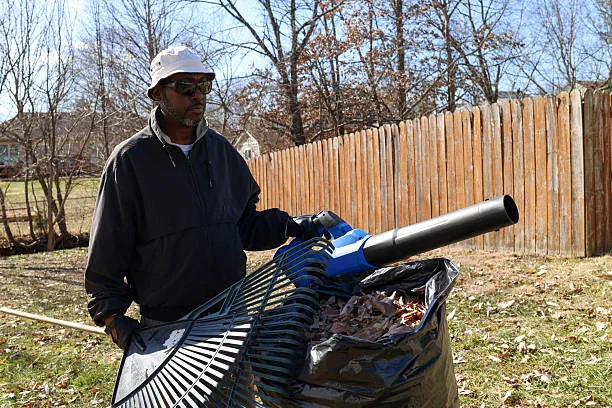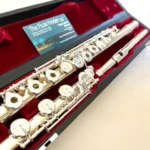Fall leaves look great for about five minutes. After that, they turn walkways slippery, hide toys on the lawn, and make the whole yard feel messy. Cleaning them up does not have to mean loud engines, clouds of dust, or a long workout with a rake. With a calm plan, the right tool, and a few easy habits, leaf cleanup can be safe, fast, and friendly to everyone around the block.
There’s so much more to discover—browse our related posts!
Why quiet cleanup matters
Noise carries. A loud blower at the wrong time can wake a baby, scare pets, or upset anyone working from home. Many areas also set common-sense limits on noise during early mornings or late evenings. Even when there are no posted rules, neighbors still notice when yard work feels peaceful versus harsh. Keeping sound low shows respect, and it usually makes the job safer. Lower speed means better control, less flying debris, and fewer surprises around corners or cars.
Plan before starting
A short plan saves time. Walk the area first and pick up branches, stones, and anything that could turn into a projectile. Check where you want the leaves to end up—garden beds, compost bin, or the curb for pickup. Look at the wind. A gentle breeze can help push leaves in the right direction; strong gusts will undo your progress. Dry leaves move faster than wet ones, but very dry leaves create dust. Slightly damp is the sweet spot for low mess.
Set a start and stop time. Aim for late morning or early afternoon when most people are up and moving. This keeps things neighbor-friendly and gives good light to see curbs, steps, and edges.
Choose the right tools
Quiet tools make quiet yards. Battery and corded models are lighter and produce less noise than gas engines. Variable speed controls help you ease back the airflow when working near windows, cars, or flower beds. Narrow nozzles focus the stream for cracks along the driveway. Wider tips move bigger piles across open space.
For a simple, low-noise setup, an electric leaf blower fits most small and medium yards. Use the lowest speed that still moves leaves. Work closer to the ground instead of cranking up the power. This keeps sound down and gives more control around tight spots.
A smooth method for lawns
Think of the lawn in lanes. Start along one edge and walk in straight lines, gently sweeping the air stream across the grass at a shallow angle. Keep the nozzle about a foot above the surface. The goal is to push leaves into “windrows,” long narrow lines you can guide toward a final pile. Avoid blasting straight down into the grass. That only digs up soil and lifts dust.
When leaves thin out, lower the speed and switch to short bursts. Short bursts protect tender plants near beds and keep acorns or small stones from flying. If a few leaves stick, do not chase them forever. Leave them for the mower to mulch, or lift them with a light rake at the end.
Hard surfaces without the rattle
Driveways, patios, and steps collect leaves in corners. Hold the nozzle at a shallow angle to the ground and use gentle, steady airflow. This slides leaves forward without bouncing them back in your face. Start farthest from where you want your final pile and move toward it in small sections. Corners respond best to a brief pulse of air, then a pause, then another pulse. That pattern frees trapped leaves without stirring dust.
Never blow leaves into the street or storm drains. They block water and can cause slick spots. Keep everything on your property, then bag, bin, or mulch.
Control dust and debris
Dust is not just annoying; it can irritate eyes and lungs. Keep speeds modest, especially on dry days. If the ground is too dry, mist the area lightly with a hose before starting. A quick spritz is enough; puddles make a mess. Wear eye protection to block grit. A simple dust mask helps during very dry spells or when pollen is heavy.
Point the nozzle away from people, pets, and open doors. When someone passes on the sidewalk, release the trigger and wait a moment. Pausing costs seconds and shows care.
Safety every time
Good habits make the job feel calm. Wear closed-toe shoes with grip, long pants, and eye protection. Tie back long hair and avoid loose clothing that could get pulled toward air intakes. Keep hands and clothing away from the blower’s intake grill. If using a corded tool, keep the cord over your shoulder and behind you to avoid tripping or nicking it with the nozzle.
Check the area for gravel, toys, or nuts that could become projectiles. Maintain a safe distance from cars and windows. If young helpers are nearby, set a clear boundary line. Show them to stand behind the operator and to wait for a thumbs-up before crossing.
Work with the weather
Breezes can help. Stand upwind so the air works for you, not against you. If wind gusts keep changing direction, switch to smaller sections and corral leaves into nearby piles rather than dragging them across the whole yard. After a light rain, let leaves dry for an hour or two before starting. Soaked leaves are heavy and smear across pavement, which takes more effort and time to fix.
Temperature also matters. On cold days, batteries drain faster. Keep a spare battery ready if using a cordless model. Store batteries at room temperature before the job for the best performance.
Where the leaves go
A tidy pile is only half the task. Decide between mulching, composting, or bagging. Mulching returns nutrients to the lawn. Run a mower with a mulching blade over a thin layer of dry leaves until the pieces are small enough to sift down between grass blades. Composting is great for gardens. Mix dry leaves (“browns”) with fresh clippings or kitchen scraps (“greens”) to help the pile heat up and break down. If bagging, use paper yard bags or a reusable bin. Do not bag wet piles; they get heavy and tear.
Leaves around shrubs and trees can act as free mulch. Spread a thin ring around trunks, keeping a gap of a few inches so the bark stays dry. This guards moisture, cuts weeds, and looks clean.
A quick routine for busy days
Short on time? Do the hard surfaces first. Clear the path to the door, the steps, and the driveway edges. Next, sweep the lawn in two or three lanes and push leaves into one tidy pile near the garden or compost area. Bag or mulch only that pile. If extra leaves remain across the yard, leave them for the next session. Keeping entrances safe and neat matters most, and a small daily pile beats a giant weekend chore.
Small details that make a big difference
Tarp transfers save energy. Set a lightweight tarp near your final pile, slide leaves onto it, and drag the bundle to the compost spot or curb. For long driveways, move in zones so the blower never runs at full blast for too long. Rotate hands or take a short stretch break to keep wrists relaxed.
Store the blower in a dry, easy-to-reach spot. A wall hook keeps cords untangled and batteries safe. Quick access means quick cleanups, which stops leaves from building up into a stressful job.
What to remember
Quiet yard work is not complicated. Plan the direction of travel, choose a low-noise tool, and use only the airflow needed to move leaves in controlled lines. Keep speeds modest to protect eyes, windows, and nearby people. Work with the breeze, not against it. Finish with a simple plan for where the leaves will go—mulch, compost, or bag—and the yard will stay clear without turning cleanup into a big event.
Try this routine the next windy week: a calm sweep of the walkways, two or three lanes across the lawn, one tidy pile, and a fast finish. Share the steps with a partner or a young helper and turn a chore into a short, safe habit. A clean yard, quiet tools, and respectful timing keep everyone happy, including the neighbors who will barely notice the work got done.
Don’t miss out on more great reads—click through our featured posts!






